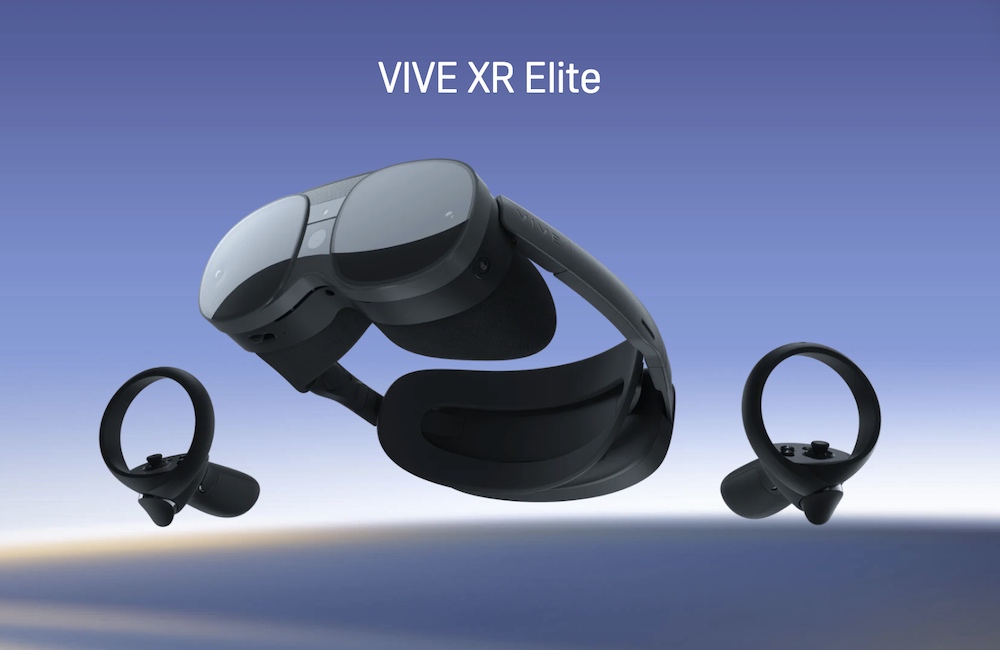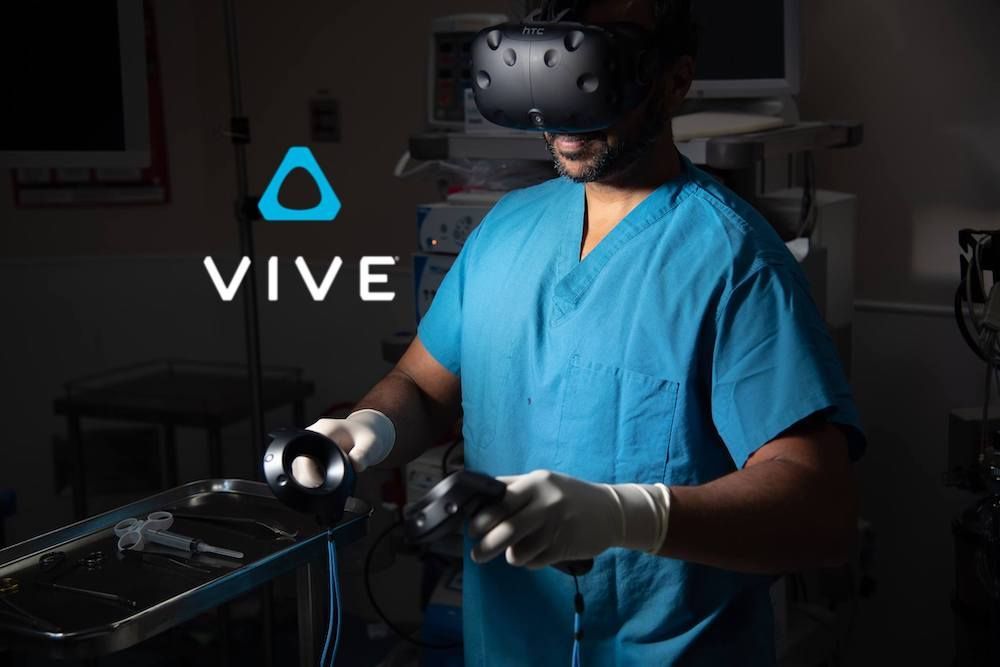As the use of virtual simulation across healthcare increases, many facilitators have begun to incorporate the use of virtual reality (VR) headsets into learning experiences. Following the launch of the Meta Quest 2 and Meta Quest Pro, the company HTC recently launched the Vive XR Elite at CES 2023. This VR and mixed reality (MR) headset includes a number of features that help create remarkable realism, such as a 4K display, a 110-degree field of view (FOV), and a 9OHz refresh rate. This HealthySimulation.com article shares more about this VR headset and discusses how the technology can be used to advance clinical simulation.
With the XR Elite, users can blend physical and virtual worlds and expand play with new possibilities. The headset features vibrant graphics and high-resolution passthrough with PC VR capability, so users can game, create, connect, and explore where realities intertwine. The sleep, compact headset is portable and comes with an adjustable IPD.
VIVE XR Elite also includes a full-color RGB passthrough camera, and hand-tracking, which enables a whole new dimension of MR scenarios. HTC notes that this can include “playing games where the characters are running on [the] furniture, having real-time overlays on musical instruments like a piano so you can learn, and even having the ultimate workstation with multiple virtual screens while still being able to use your real-world keyboard and mouse.”
The VR product comes with diopter dials for the most natural and clearest visual experience. Further, the features of the headset enable high-octane PC VR gaming through wireless streaming. According to HPC, the product offers accurate tracking and spatial awareness in varied light conditions. Users can also connect the headset to their PC with a cable or Wi-Fi 6E and enjoy low-latency, high-fidelity PC VR gaming. Skeletal-level hand tracking enables intuitive interactions using just hands. Then users can navigate, click, drag, scroll, and type with natural hand and finger movements.
Upon putting the headset on, users enter the VIVERSE and are ready for immersive adventures with crisp, immersive audio. HPC states that VIVERSE continues to demonstrate leadership in supporting open standards and is accessible from a wide range of connected devices that support a web browser. The company has partnered with the leading Japanese creator platform pixiv to Integrate VRoid’s Anime-Style Avatars into VIVERSE, which makes bringing avatars into VIVERSE leveraging the open VRM standard easy.
Overall, the Vive XR Elite presents new ways to excel where physical and virtual worlds merge. For example, Virtual Desk reinvents how users create, multi-task, and communicate. Customers can pre-order the Vive XR Elite from the company website. According to Engadget, HTC estimates that early purchases will begin shipping in late February.
“The VIVE XR Elite all-in-one represents the next milestone in the progression towards the fully immersive internet, going beyond today’s VR with accurate pass-through video to open up a new realm of realism in learning and playing,” said Cher Wang, Co-Founder and Chairwoman of HTC Corp. “This advanced yet compact device offers the best of all worlds for consumers, providing the ideal physical gateway to the universe of experiences offered by VIVERSE, our version of the metaverse, with the widest variety of content inputs even up to the very latest standards such as Wi-Fi 6E.”
Support from Healthcare Simulation VR Companies
Is your healthcare simulation company or clinical simulation center utilizing the Vive XE Elite? Share your thoughts with HealthySimulation.com!
More About Virtual Reality in Medicine
Virtual reality in medicine is an emerging technology that can be used for both education and instruction within the healthcare field. Virtual reality is used in healthcare simulation environments to allow learners to experience visual stimuli delivered via computer graphics, as well as other sensory experiences. A large benefit of advancing virtual reality in medicine technology is that virtual reality allows learners to perform a number of tasks and procedures involving the human body without ever having to practice on a live patient.
The most central aspect of virtual reality technology that makes the technology ideal for healthcare learners is VR’s immersive capacity. When virtual reality is used in clinical simulation environments, the technology allows the simulated environment to surround a learner’s entire perceptual field. This means that the user feels psychologically present in the digital world rather than in their physical reality.
Virtual reality in medicine is helping to train the next generation of healthcare professionals. Virtual reality can be used to educate learners on diagnosis, treatment, rehabilitation, surgery, counseling techniques, and more. This medical simulation technology allows learners to practice their skills without fear of causing devastating errors.
However, virtual reality does not rob learners of the valuable lessons learned when interacting with real patients. Virtual reality tools still provide the hands-on experience required to acquire familiarity with and comfort in performing procedures. As learners make mistakes, they can be thoroughly corrected in real-time and without risk. Virtual reality allows for ample practice so that skills can become second nature before they are applied in real-world scenarios. This makes virtual reality a safe and controlled setting for learners and their future patients, too.
More About HTC
HTC VIVE is the premier virtual reality (VR) platform and ecosystem that creates true-to-life VR experiences for businesses and consumers. The VIVE ecosystem is built around premium VR hardware, software, and content. Today, HTC brings brilliance to life through leading innovation in smart mobile devices and experience design. Beginning with a vision to put a personal computer in the palm of customers’ hands, the company has led the way in the evolution from palm PC to smartphone.
The Pursuit of Brilliance is at the heart of everything the company does, inspiring best-in-class design and game-changing mobile experiences for consumers around the world. At HTC, the Pursuit of Brilliance is the impulse to create, to venture into the unknown with an unwavering dedication to bring innovative design to life. This is what pushes HTC every day to re-imagine new ways to connect the world, the company’s consumers, and their pursuits in ways never before thought possible.








